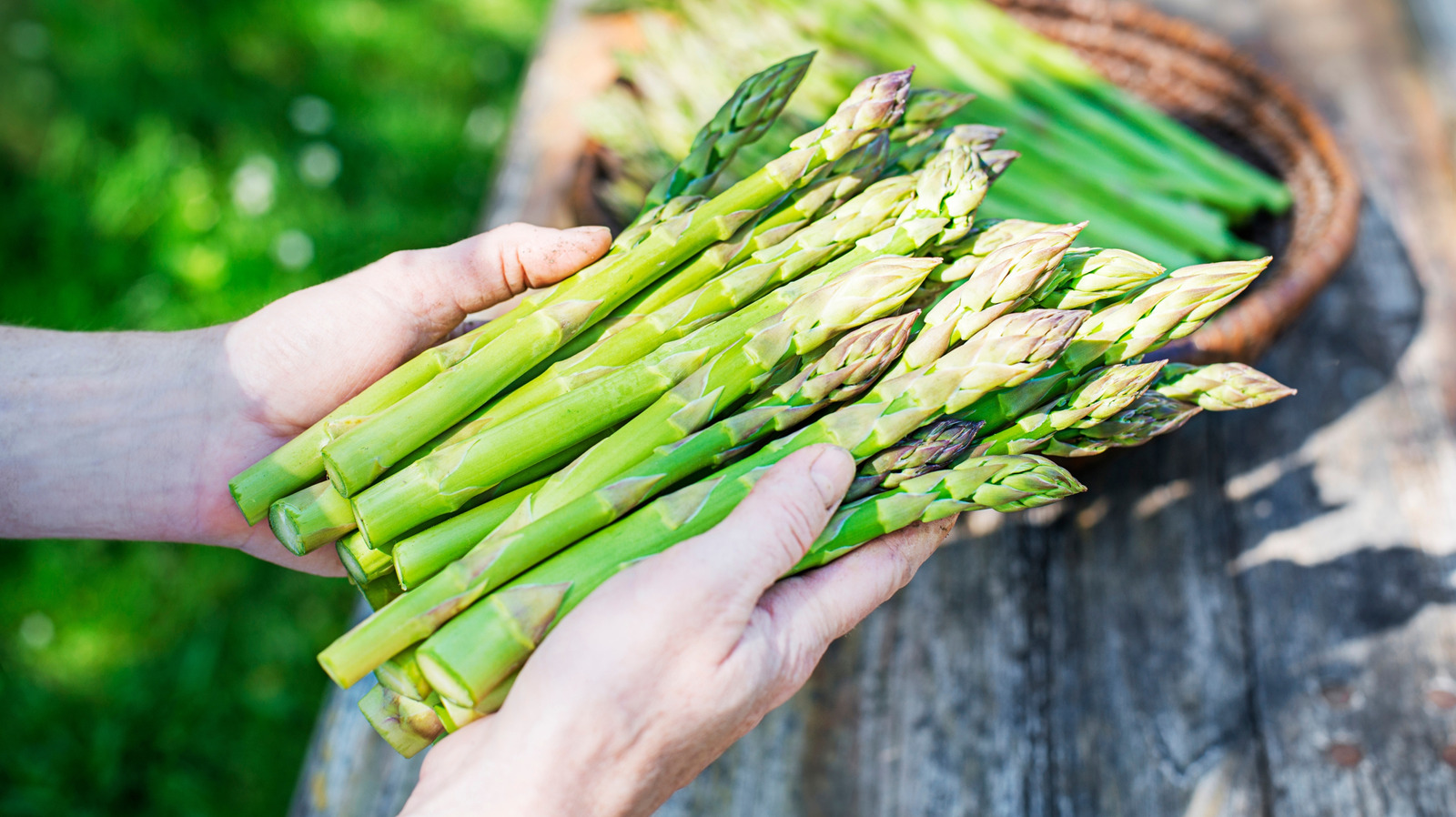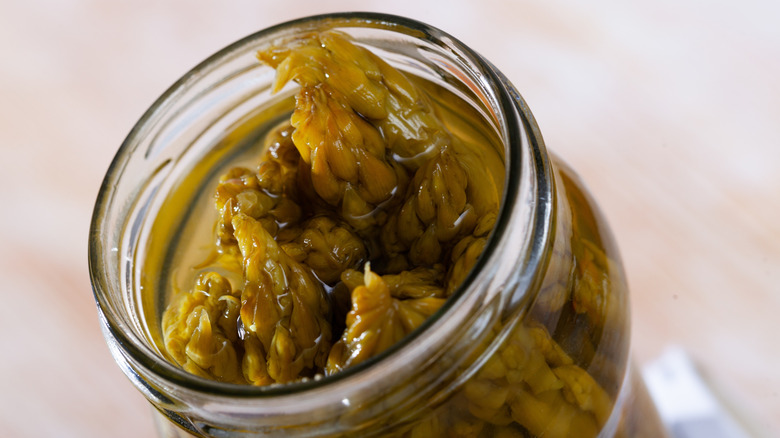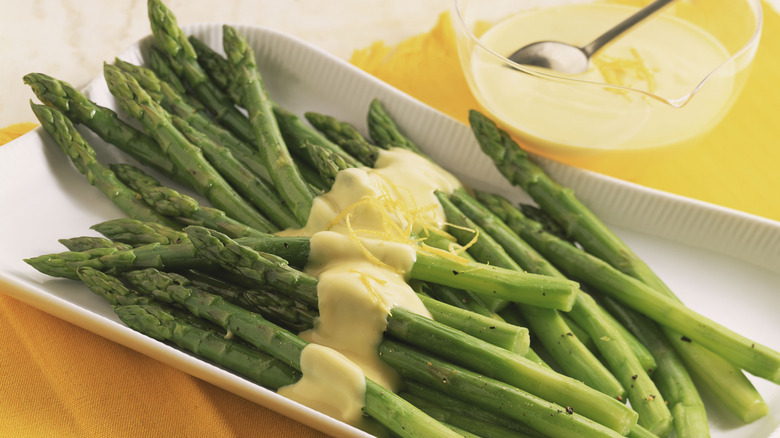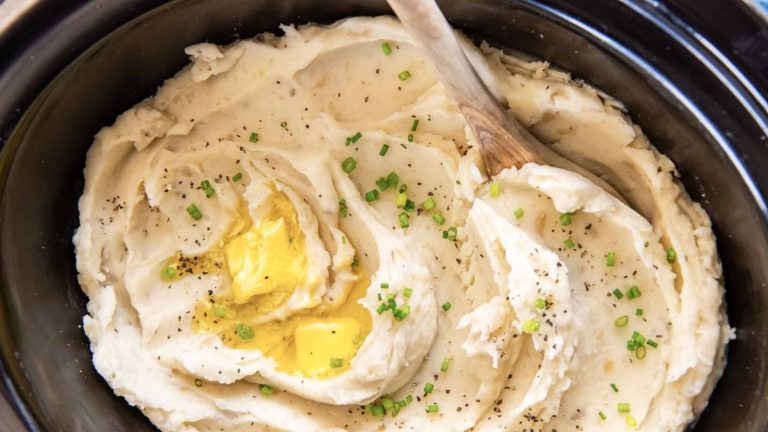Asparagus sits right up there with artichokes and ramps as one of the very finest spring vegetables. Though a year-round favorite, it’s undoubtedly at its best (and its most abundant) when the weather begins to turn a little warmer and the days get a little longer. But the sad truth of the matter is, whenever there’s a glut of a certain vegetable, excited foodies can buy too much and not have enough ways to use it up. Fear not; if you’ve got a fridge full of asparagus that you won’t get through before it’s past its best, you really should be pickling it.
Pickling is a criminally underrated method of preparing produce, good for far more than just cucumbers and onions. Indeed, fruit, nuts, and even fish (if you’re Swedish) all make for delicious at-home pickling possibilities. Asparagus, though, takes to pickling particularly well. It highlights those natural flavors that peak-season asparagus has in spades: Sweetness, grassy freshness, and a little bitterness. It also brings a beautiful, tangy complexity to proceedings, upping the sweetness and adding a little spicy complexity. Making your own pickled asparagus presents a unique opportunity to preserve those flavors while they’re at their absolute best, letting you enjoy them through the summer and even beyond, and it also gives you a chance to experiment with flavors and create some genuinely interesting combinations.
How to pickle asparagus
Pickling is a particularly scientific process as far as cooking techniques go; as long as you follow the basic rules, it’s pretty hard to mess up. As with most pickled foods, the quality of the final product you end up with is more dependant on the ingredients you use than exactly how you make it; start (perhaps a little obviously) with some really good asparagus. Thicker spears (despite efforts on the part of grocery stores to convince you otherwise) are what you want — to find the best of the best, use Julia Child’s method for picking perfect asparagus and buy individual spears rather than pre-packaged bundles. This way you can be sure each one you buy is a winner.
Once you’ve got your spears, grab some distilled white vinegar (or white wine vinegar) and water, which forms the base of your brine. Grab your pickling jars and fill them with your asparagus (spears facing upwards), plus some garlic, onions, whole peppercorns, mustard seeds for a little spiciness, and dill for some herby freshness. Top everything off with the brine before sealing and submerging in water that’s been brought to a boil for 10 minutes. Once everything’s cooled, check to see that those jars are properly sealed and voilà! Perfectly preserved pickled asparagus that should last you through the summer… if you can bear to wait that long.
How to use your pickled asparagus
Though it makes for a great summer snack all on its own, pickled asparagus is a criminally underrated ingredient when it comes to adding a little refinement to your cooking. You could serve them cold as a delicate-yet-complex appetizer paired with a delicious homemade hollandaise sauce — yes, it’s good for more than just eggs Benedict — that complements the tang of the pickles whilst providing a welcome contrast to the crisp, crunchy asparagus in terms of flavor and texture. Similarly, you could pair them with Ina Garten’s easy and delicious lemon vinaigrette for a playful spin on the classic leeks vingairette — a dish that gets even better when you introduce the coveted white asparagus into the mix.
Of course, you aren’t limited to cooking with the pickled asparagus itself — once you’ve eaten the last of it, the pickling liquid left behind can be a true gift to the crafty home cook. It’s the unexpected ingredient to up your soup game, especially in vegetable soups where the grassy tang of the pickling juice adds an unexpected lift that brings the very best out of your other ingredients.







